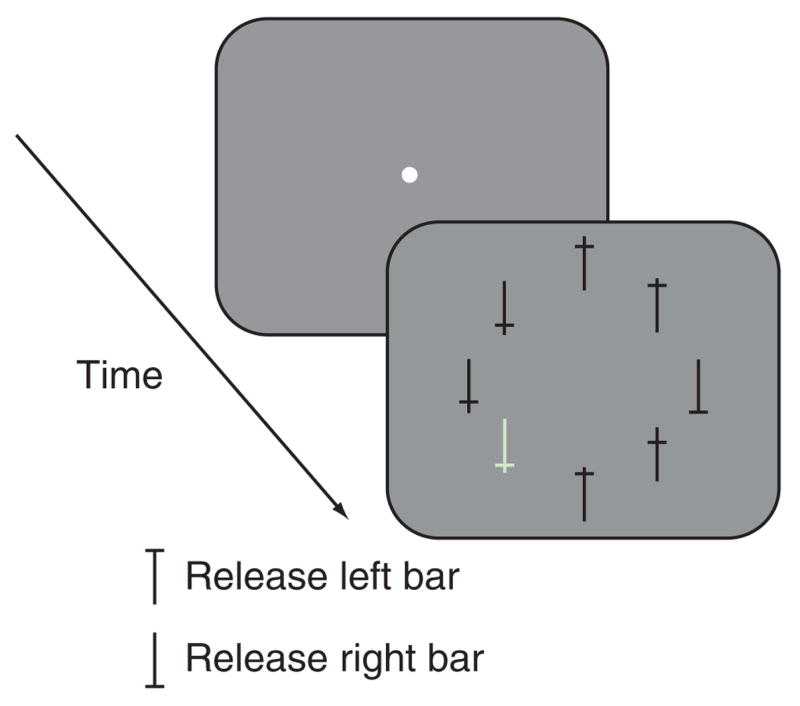Figure 1.

Behavioral task. The monkeys began the task by grabbing two bars attached to the primate chair. A fixation point appeared, which the monkey had to look at for 1–1.75 s, after which it disappeared and was replaced by an eight-stimulus array positioned along an imaginary circle such that one member of the array was in the center of the receptive field of the neuron under study. One of the stimuli was the target and the remaining seven were distractors. In every trial, one of the distractors (a bright green stimulus) popped out. The monkeys had 3 s to report the orientation of the target by releasing one of the two bars. No constraints were imposed on the monkeys’ eye movements; they were not required to fixate the target before giving the response and were not penalized for not fixating the target.
